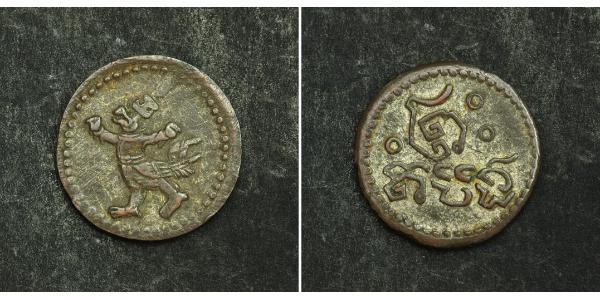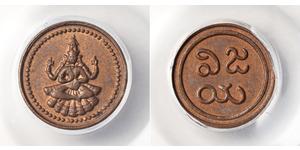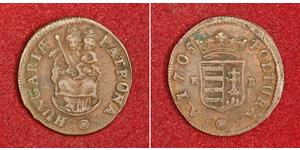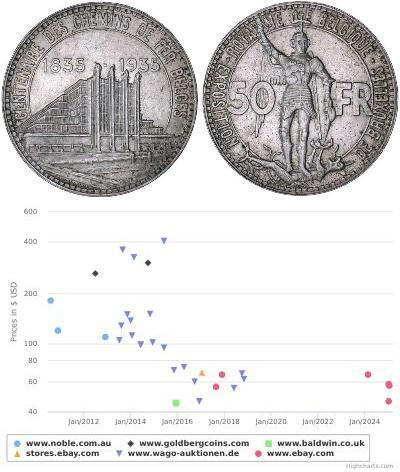(Vendue pour $32.0)
1864, Cambodia, Norodom I. Beautiful Billon "Garuda" 2 Pe (½ Fuang) Coin. VF+
Condition: F-VF
References: KM-26.
Mint Period: 1864-1880
Denomination: ½ Fuang (2 Pe) w. Garuda
Composition: Billon (bronze/silver alloy)
Diameter: 18mm
Weight: 1.34gm
Obverse: Standing crowned figure of Garuda (Krut) with raised arms, walking left. All within circle of pellets.
Reverse: Cambodean inscription ("Preah Dambaan" = Sacred club) within circle of pellets.
The Garuda is a large bird-like creature, or humanoid bird that appears in both Hinduism and Buddhism. Garuda is the mount (vahana) of the Lord Vishnu. Garuda is the Hindu name for the constellation Aquila. The brahminy kite and phoenix are considered to be the contemporary representations of Garuda. Indonesia adopts a more stylistic approach to the Garuda's depiction as its national symbol, where it depicts a Javanese eagle (being much larger than a kite).
em>.
Norodom (Khmer: ព្រះបាទនរោត្តម; or Ang Voddey) (February 1834 – 24 April 1904) ruled as king of Cambodia from 1860 to 1904. He was the eldest son of King Ang Duong, who ruled on the behalf of Siam, and half-brother of Prince Si Votha as well as the half-brother of King Sisowath. Norodom was considered to be the first modern Khmer king. He was credited with saving Cambodia from disappearing altogether. In 1863, to prevent the two powerful neighbours, Vietnam and Siam, from swallowing Cambodia altogether he was invited by France to make Cambodia its protectorate. However, he sent many letters to Siam claiming French Admiral de la Grandière had forced him into signing a false treaty. Many Cambodians believed that this brilliant act and his shrewdness did actually save Cambodia from disappearing.
When he was born, Cambodia was under Siamese rule, the royal family, being related to the Siamese. Nonetheless, The royal capital of Cambodia was in Oudong (named for the first King of Ayutthaya), but the main center of the area was the capital of Siam in Bangkok. Prince Norodom was sent by his father to study in Bangkok, where he studied Siamese (Thai), Politics, Military, Buddhist scriptures and the ancient Pali language.
2 Gulden Ville libre de Francfort Argent
Le groupe a 72 pièces / 71 prix
⇑
























